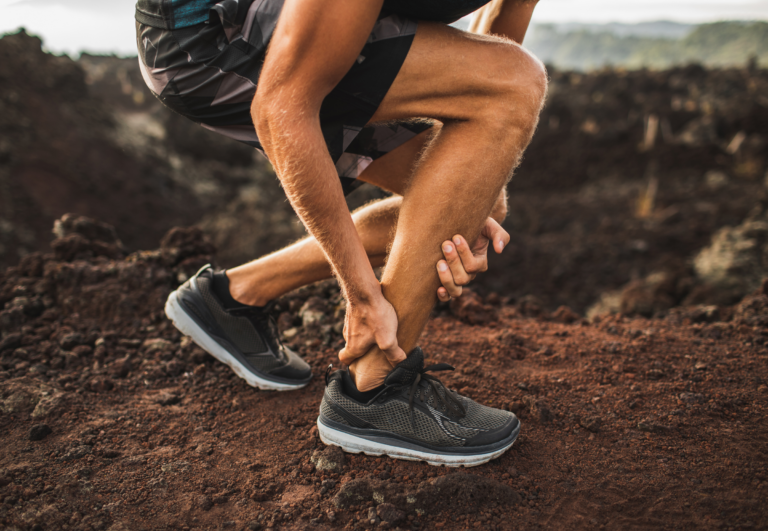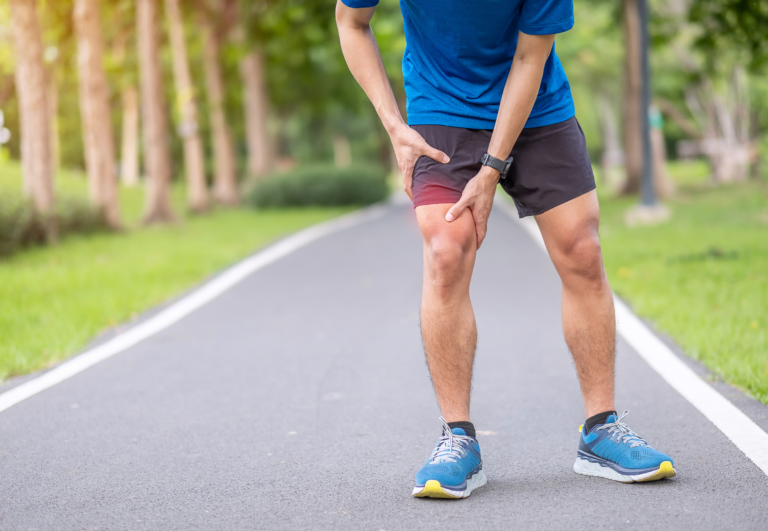Running Warm-Up Post-Injury (Quick Routine Tips for an Easier Recovery!)
Warming up is a critical step for any runner, but it becomes even more vital when returning to running after suffering an injury. During your recovery period, your body has had time to heal, but it’s also lost some of its conditioning, making a proper warm-up even more necessary to prepare your muscles and joints for the demands of running.
A well-constructed warm-up serves several purposes: it gradually increases your heart rate, promotes blood flow to your muscles, and prepares your nervous system for physical activity. For those recovering from an injury, a mindful warm-up routine is essential to minimize the risk of re-injury as you ease back into your running program. It ensures that your body is not shocked into action, which can be detrimental to tissues that are still sensitive or regaining strength.
Warm-Up Routine Tips for Runners Recovering from an Injury
Below is a list of some of the most common running injuries and a few warm-up tips for each to help runners during their recovery process.
Remember, it’s crucial to have a healthcare provider’s clearance before beginning any warm-up or exercise routine post-injury.
Plantar Fasciitis
- Toe Curls and Towel Scrunches: Place a towel on the floor and use your toes to scrunch it towards you, which can help strengthen the arch and the plantar fascia.
- Calf Stretches: Stand facing a wall with one foot in front of the other and lean forward, keeping your back heel on the ground to stretch the calf of the rear leg.
Runner’s Knee (Patellofemoral Pain Syndrome)
- Straight Leg Raises: Lie on your back with one leg bent and the other straight. Lift the straight leg slowly, keeping the knee locked, to strengthen your quadriceps.
- Hip Abductor Strengthening: Lie on your side with the injured leg on top. Lift the top leg upward, keeping it straight, to strengthen the muscles on the outside of your hip.
Iliotibial (IT) Band Syndrome
- Hip Bridges: Lie on your back with knees bent and feet flat on the ground. Lift your hips to create a straight line from knees to shoulders, which can help strengthen glutes and hips.
- Side Leg Raises: While lying on your side, keep your bottom leg bent for stability and your top leg straight. Raise the top leg without moving the rest of your body.
Achilles Tendinitis
- Ankle Dorsiflexion Stretch: Stand with the affected foot behind you and gently press the heel down while keeping the leg straight, stretching the Achilles tendon.
- Heel Drops: Stand on a step with your heels hanging off the edge. Slowly lower your heels below the level of the step and then raise back up.
Shin Splints
- Ankle Circles: Lift one foot off the ground and rotate the ankle to promote flexibility and blood flow.
- Toe Taps: While sitting or standing, tap your toes rapidly on the ground to help activate the muscles in the lower leg.
Hamstring Strain
- Hamstring Curls: Stand and hold onto a stable object for balance. Slowly bend your knee, bringing your heel toward your buttocks to engage the hamstrings gently.
- Standing Hamstring Stretch: Place one foot in front of you, heel on the ground, and toe pointed up. Gently lean forward from the hips until you feel a stretch in the back of your thigh.
Stress Fractures
- Non-weight-bearing Activities: Depending on the location of the stress fracture, engage in activities like swimming or cycling that do not put stress on the injury.
- Gentle Range of Motion: Perform non-impact exercises that move the injured area through its full range of motion without bearing weight.
For all injuries, it’s essential to start with light activity and gradually increase intensity as tolerated, and always stop if you experience pain. Additionally, incorporating low-impact cross-training activities can maintain fitness while reducing the stress on the injured area.
Always consult with a healthcare professional or physical therapist for personalized advice and to ensure that your warm-up routine is safe and effective for your specific injury and stage of recovery.
Injuries and Their Impact on Running
Understanding the intricacies of running injuries and the importance of rest and recovery is crucial for a successful return to your running routine post-injury.
Types of Running Injuries and Healing Tissues
Stress fractures, particularly in the tibia, are common injuries afflicting runners. Such injuries arise from repetitive stress causing micro-damage to the bone which, if not given adequate time to heal, can lead to a full-blown fracture.
Similarly, muscles and tendons can suffer from overuse, leading to strains and tears. The severity of these injuries varies widely, and the healing tissue must be allowed to repair itself effectively before resuming high-impact activities like running.
- Common Running Injuries:
- Stress Fracture
- Muscle Strain
- Tendonitis
- Healing Tissues Involved:
- Bone Remodeling for Fractures
- Muscle Fiber Regeneration
- Tendon Repair
The Role of Rest and Recovery Post-Injury
Rest is not merely a cessation of activity; it is an active part of your recovery deemed necessary by health professionals. The role of rest and recovery is to give the healing tissue the time it requires without the added stress of running.
Your doctor or a physical therapist can provide guidance on the appropriate duration and methods of rest, which might include limited weight-bearing exercises or activities. The patient’s involvement in adhering to the recommended recovery protocol significantly influences the overall health outcomes.
- Rest and Recovery Guidelines:
- Consult with your health provider for a personalized recovery plan.
- Adhere to recommended rest periods to ensure proper healing of tissues.
- Gradually reintroduce stress to healing bones, muscles, and tendons.
By following these targeted strategies, you can aid your body’s natural healing process and return to running with confidence.
Tailoring Your Training Post-Injury
Injury recovery requires a thoughtful approach to your running routine. You need to balance healing with maintaining fitness, easing back into a regimen that suits your current capabilities without risking re-injury.
Adjusting Training Frequency and Duration
- Frequency: Reduce your usual running frequency, starting with as little as 1-2 times per week depending on your injury severity.
- Duration: Keep runs short. Initially, sessions may only be 10-15 minutes, gradually increasing as your body tolerates.
Example Training Adjustment Table
| Weeks Post-Injury | Frequency | Duration |
|---|---|---|
| 1-2 | 1x/week | 10 min |
| 3-4 | 2x/week | 15 min |
| 5-6 | 3x/week | 20 min |
Cross-Training and Alternative Exercises
- Low-Impact Cross-Training: Integrate activities like cycling or water running to maintain cardiovascular fitness while minimizing impact forces.
- Strength Training: Including strength training to support the injured area and improve overall conditioning.
Cross-Training Options
| Activity | Benefit |
|---|---|
| Cycling | Builds endurance with low joint impact |
| Water Running | Mimics running motion without the stress |
Transitioning Back to Full Training
- Progress Gradually: Increase running workload slowly to prevent setbacks—no more than 10% increase in duration or intensity weekly.
- Monitor for Pain: If pain surfaces, cut back and consult with a health professional before proceeding.
Transition Checklist
- Pain-free light activities
- Completed shorter, low-intensity runs
- Gradual reintroduction of high speed running or sprinting
- Fitness level feels ready for return to sport
Preventing Future Injuries
After a running injury, it’s crucial to make informed choices to prevent recurrence. Here, you’ll find focused advice on selecting the right running shoes, considering environmental factors, and tuning into your body’s signals.
Running Shoe Considerations
Choosing the appropriate running shoe is pivotal to avoiding lower extremity injuries. A good running shoe should offer adequate support and match your foot’s arch and gait. Here’s what to look for:
- Support: Shoes should support your arch type—high, low, or neutral.
- Cushioning: Adequate cushioning absorbs impact, vital when running on hard surfaces like concrete.
- Fit: Ensure a thumb’s width of space in the toe box to avoid cramped toes.
Environmental Factors and Running Surfaces
Your running environment can significantly impact injury risks. Here’s what to consider:
- Running Surfaces: Opt for softer surfaces (e.g., trails, tracks) to minimize stress on your joints.
- Weather Conditions: Be mindful of the wind and temperatures. Wind can increase effort, while extreme temperatures can lead to overexertion.
- Adaptation: Switch up running areas to challenge different muscle groups and avoid overuse injuries.
Listening to Your Body’s Signals
Staying in tune with your body is key to stopping injuries before they escalate. Here’s how to listen effectively:
- Pain: Acknowledge pain as a signal to rest, not a demon to ignore.
- Niggles: Address minor aches promptly to prevent them from turning into major issues.
- Rest Days: Incorporate rest days into your training to allow for recovery and muscle repair.






